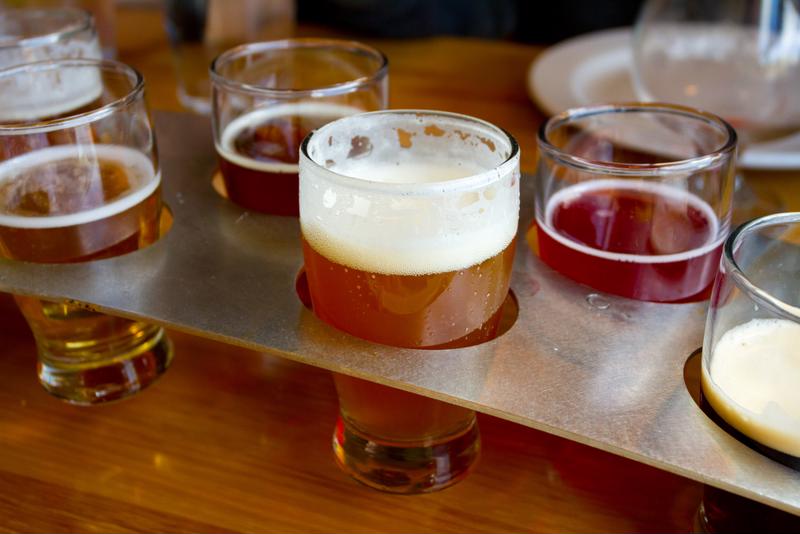Craft beer’s explosion in popularity over the past several years has paved the way for new ideas in cooking as well. While many fine-dining restaurants still focus on offering wines to complement a meal, beer pairings have become common in establishments across the country. Students in culinary arts programs will give themselves an advantage if they consider how their own dishes can be enhanced with the right brew.
Know your beer styles
The variety in beer styles is nearly endless and constantly evolving. However, the first step to building a quality pairing menu is having a solid understanding of the types of beer most commonly available and how they will interact with different kinds of food. The most basic distinction is between ales and lagers.
Beer Advocate explained that ales are brewed with top-fermenting yeast under warm conditions. Some of the most popular ales include light and hoppy India pale ales, and Belgian ales, which tend to be light-bodied despite higher alcohol content. Stouts and porters are dark beers made with roasted malt or barley, including variations like the sweet milk stout, strong imperial stout and creamy dry or Irish stout.
Brewers use bottom-fermenting yeast at colder temperatures to make lagers. Pale lagers, such as pilsners and American lagers, are mild in flavor and the most popular style in the world, according to Beer Tutor. Dark lagers, like German bocks, are generally smoother and stronger than other beers in this style. Doppelbocks are a particularly malty variant with high alcohol content.
 Chefs should be aware of the various styles of beer that might accompany their dishes.
Chefs should be aware of the various styles of beer that might accompany their dishes.Find interesting combinations
When deciding what beer will go well with a dish, a chef must consider what overall effect he or she wishes to achieve on the diner. As Epicurious explained, there are two major approaches to developing a pairing. You can either look for combinations that are similar and complementary or ones that contrast in an intriguing, pleasant manner.
Complementary pairings depend on finding an enjoyable similarity in the flavor profiles or ingredients of your meal and drink. Foods that are heavy on grains like risotto go well with the crisp taste of an amber lager or a pilsner. The roasted quality of a hoppy, bitter beer like an American pale ale serves nicely alongside duck or quail. On the other hand, the Wall Street Journal suggested combining the citrus taste of double or imperial IPAs with a tart dessert like key lime pie.
“Ensure contrasting flavors offer variety without clashing.”
When working with contrasting flavors, it is important to ensure that neither the food or drink is overwhelming and that they present variety without clashing. For instance, Bavarian or Belgian-style wheat beer offer a sweetness that stands out pleasantly against the acidic taste of a vinaigrette. Bringing together dry stout and oysters is another classic example of combining very different items. A black lager or porter can also work well with briny, sweet shellfish. However, Serious Eats warned against choosing a sweeter, heavier stout, which might grow unpleasant when combined with oysters’ lingering saltiness.
While these guidelines can help you to find some excellent pairings, you should always feel free to experiment. The right selection can accentuate subtle flavors in a dish. With breweries turning out fascinating new variations on beers all the time, you may discover unexpected combinations that unlock fresh dimensions in the meals you prepare.
Beer pairings in today’s restaurants
Many great chefs are finding harmony between food and drink in exciting ways. While in some cases this may mean just recommending a particular style of beer to accompany a meal, brewpubs make these connections the cornerstone of their businesses. For instance, Eagle Rock Brewery in Los Angeles makes a variety of beers, such as an IPA and a Belgian amber ale brewed with Intelligentsia coffee. In the associated pub, executive chef Jerry Su presents seafood, poultry, pork and vegetarian dishes, all created with beer pairing in mind.
“Culinary pairing has also been a major influence on beer producers.”
Such combinations have also been a major influence on beer producers. Craft Beer talked about the significance of the practice with the president of Louisiana-based Abita Brewing Company, David Blossman.
“We are very lucky that local chefs from the beginning showcased our beers as ingredients and pairings,” Blossman said. “It was natural for us to join along with beer dinners. We learned a lot from the chefs and their ideas of pairing.”
Bon Appetit reported on the trend of pop-up restaurants appearing in breweries for limited periods, explaining that these events allow customers to experience unique blends of food and drink. Meanwhile, brewmasters and restaurant or food-truck proprietors are able to focus on their respective strengths.
Chicago-based Mexican restaurant Xoco has conducted such pop-up meals at Half Acre, Revolution Brewing and Temperance Beer Company. Threes Brewing in New York City includes a kitchen space that rotates through residencies by chefs from local establishments like Battersby and Dover. These ventures demonstrate that there tremendous opportunities for chefs to collaborate with brewers and further explore the culinary uses of beer.





